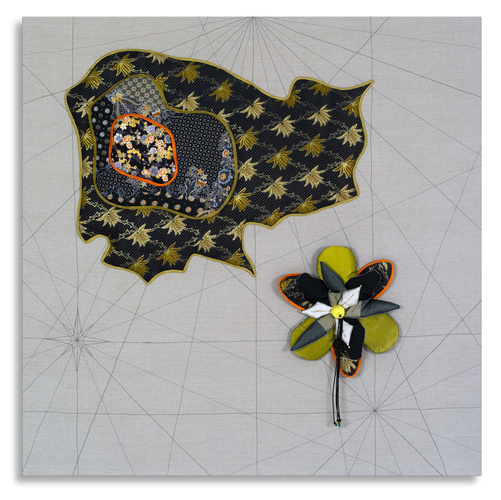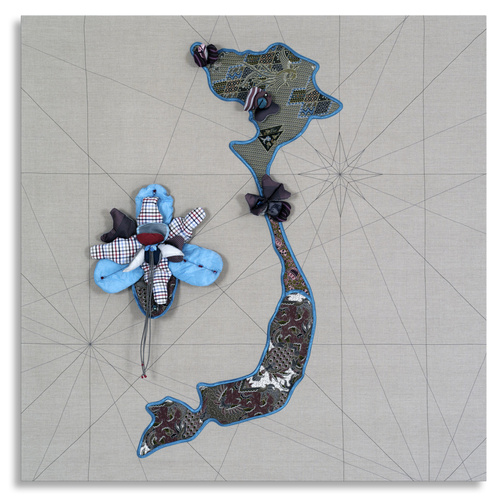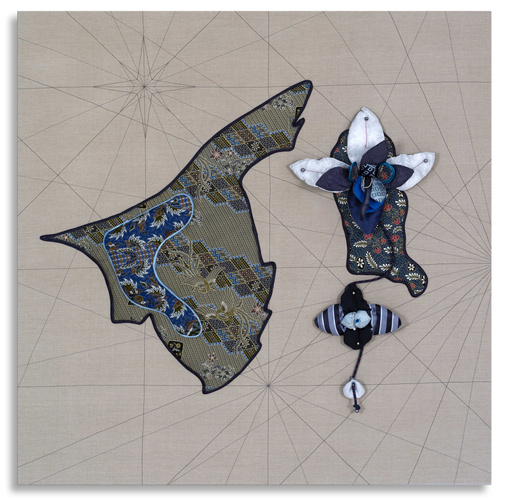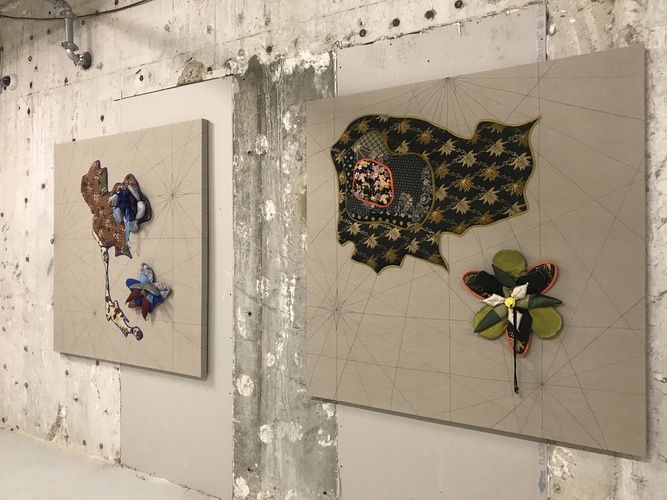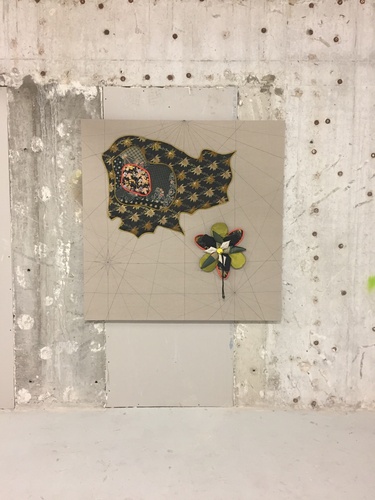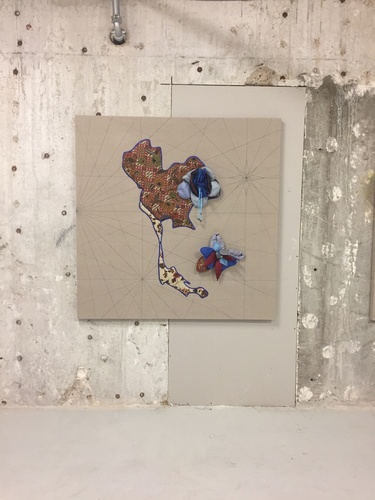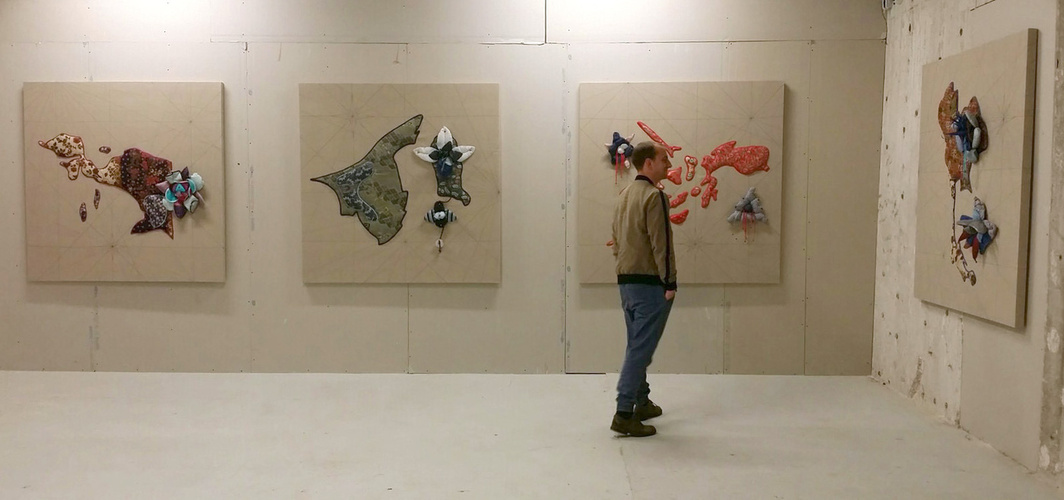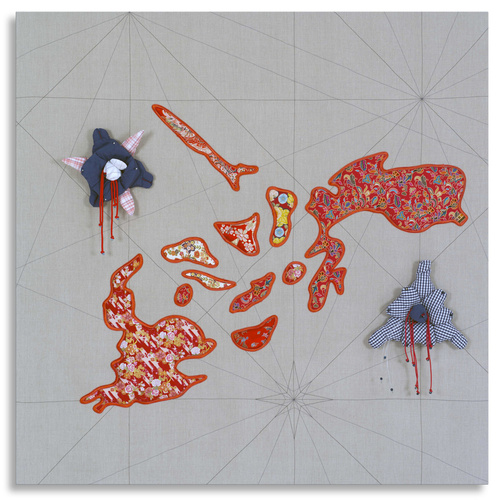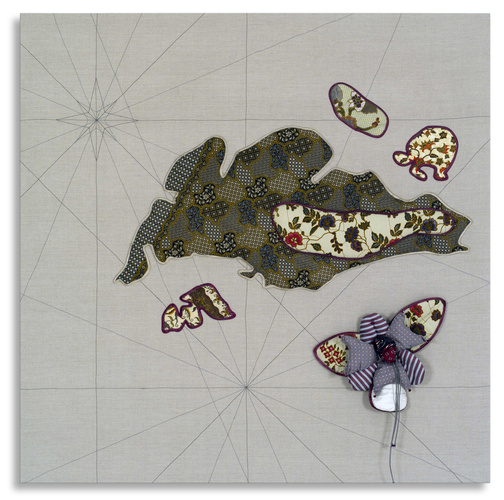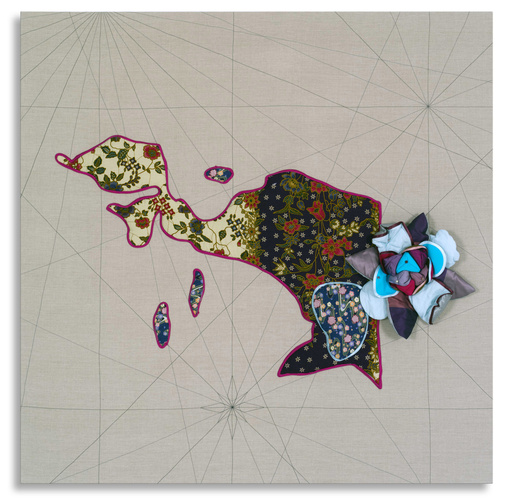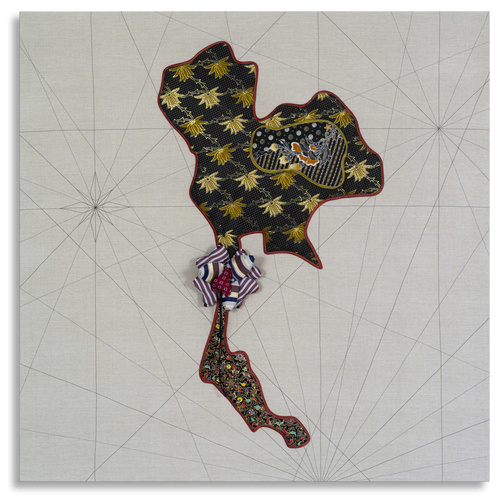Archipelago (Silk route South China Sea - Bay of Bengal)
Date:
2018
Materials:
Textiles sourced from South East Asia, China, Japan, glass beads, silk and embroidery on linen
Dimensions:
150 x 150 cm
Exhibition history:
2025 5th Hangzhou Triennial of Fiber Art. Zhejiang Art Museum, Hangzhou, China; 2018 Le Consulat, Paris, France
Courtesy:
Lucy + Jorge Orta
During a research residency at NTU Centre for Contemporary Art in Singapore in 2017, Lucy Orta learnt that early Java batik represented complex spatial concepts relating to a community’s lived experience. Batik motifs may have depicted villages, burial sites, and agricultural cycles and given Indonesia has approximately seventeen-thousand islands, batik maps may have been used for maritime navigation.
Building on the cultural significance of textiles as a storytelling device and their possible role in navigation, ‘Archipelago’ take the form of immense textile maps indicating the principal islands and countries of Southeast Asia. The linen canvases are machine embroidered with nautical lines and compass roses taken from early 17th-century Dutch and British maritime trade maps some indicating the Silk Route from the South China Sea through Bay of Bengal. The maps speak to the broader cultural and ecological impact of the transcontinental network of economic and political interests that governed relationships between Asia and Europe, especially textile trade of silk, woven in China and traded for venetian glass beads, among other goods. Today, the China Belt and Road Initiative extends the ever-expansive power of global trade and the environmental consequences such as the deforestation of Southeast Asian tropical forests for monocrop plantations.
Lucy’s islands are crafted with textiles purchased in Singapore markets, representing the multi-ethnic communities living in there. Contemporary Java batik and prints, Chinese jacquard, Japanese wovens, Malay embroideries are patchworked together, bound and padded to simulate imaginary topographies. Her islands are then populated with beaded silk flowers making a silent and poetic plea to curb the environmental devastation of consumption.
